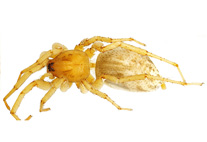Abstract
Without applying an a priori bias for species boundaries, specimen identities in the plant-parasitic nematode genus Mesocriconema were evaluated by examining mitochondrial COI nucleotide sequences, morphology, and biogeography. A total of 242 specimens that morphologically conformed to the genus were individually photographed, measured, and amplified by a PCR primer set to preserve the linkage between specimen morphology and a specific DNA barcode sequence. Specimens were extracted from soil samples representing 45 locations across 23 ecoregions in North America. Dendrograms constructed by neighbor-joining, maximum likelihood, and Bayesian Inference using a 721-bp COI barcode were used to group COI haplotypes. Each tree-building approach resulted in 24 major haplotype groups within the dataset. The distinctiveness of these groups was evaluated by node support, genetic distance, absence of intermediates, and several measures of distinctiveness included in software used for the exploration of species boundaries. Five of the 24 COI haplotype groups corresponded to morphologically characterized, Linnaean species. Morphospecies conforming to M. discus, Discocriconemella inarata, M. rusticum, M. onoense, and M. kirjanovae were represented by groups composed of multiple closely related or identical COI haplotypes. In other cases, morphospecies names could be equally applied to multiple haplotype groups that were genetically distant from each other. Identification based on morphology alone resulted in M. curvatum and M. ornatum species designations applied to seven and three groups, respectively. Morphological characters typically used for species level identification were demonstrably variable within haplotype groups, suggesting caution in assigning species names based on published compendia that solely consider morphological characters. Morphospecies classified as M. xenoplax formed a monophyletic group composed of seven genetically distinct COI subgroups. The species Discocriconemella inarata is transferred to Mesocriconema inaratum based on its phylogenetic position on the COI tree as well as previous phylogenetic analyses using 18S, ITS1, and cytochrome b nucleotide sequences. This study indicates that some of the species considered cosmopolitan in their distribution are actually multispecies polyphyletic groupings and an accurate assessment of Mesocriconema species distributions will benefit from molecular determination of haplotype relationships. The groups revealed by COI analysis should provide a useful framework for the evaluation of additional Mesocriconema species and will improve the reliability of designating taxonomic units in studies of nematode biodiversity.

